Nian gao (Chinese: 年糕, means Chinese New Year cake) is a must-have food during Chinese New Year. It is a homonym for “higher year”, which means raising oneself higher in the coming year. Traditionally, it is made with glutinous rice and white sugar, the steaming time will take about 12-20 hours. This simple version nian gao is made with glutinous rice flour and caramel syrup, the steaming time is shorter, about 2 hours.
CHINESE VERSION: 简易版焦糖年糕
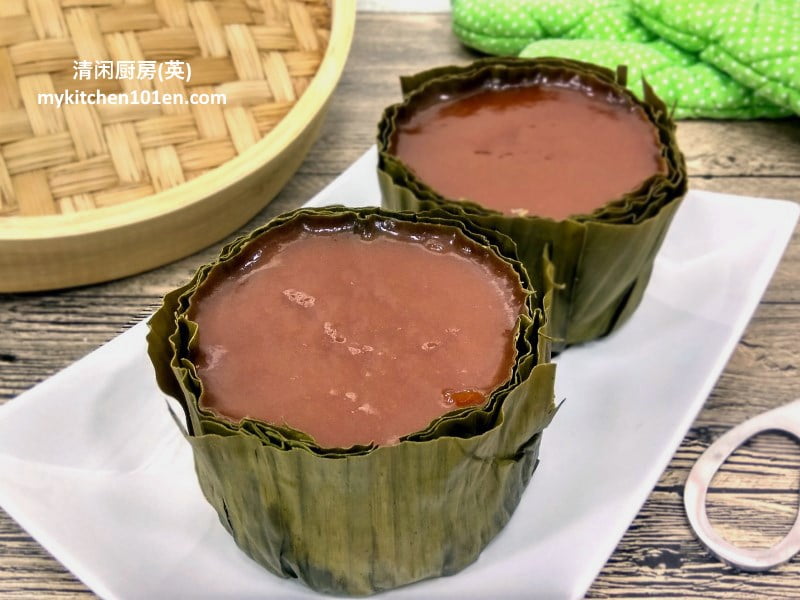
Related recipes: Taro Sweet Potato Fried Nian Gao, Taro Sweet Potato Nian Gao Spring Rolls, Steamed Nian Gao with Shredded Coconut
[ads1]
Simple Version Caramel Nian Gao (a.k.a. Kuih Bakul) | MyKitchen101en
Yields: 2 pieces (480 g each) / 20 servings (48 g each)
Ingredients:
- 350 g granulated sugar
- 430 g hot water
- 350 g glutinous rice flour
- adequate banana leaves (to line moulds)
Instructions:
Preparing the moulds:
1 Blanch banana leaves with hot water to soften them.
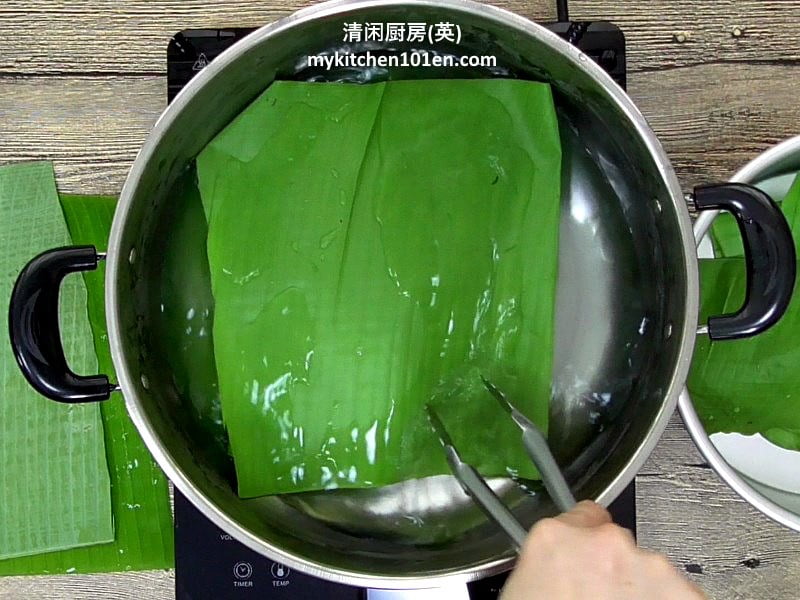
2 Clean the softened leaves gently with a dishwasher net.
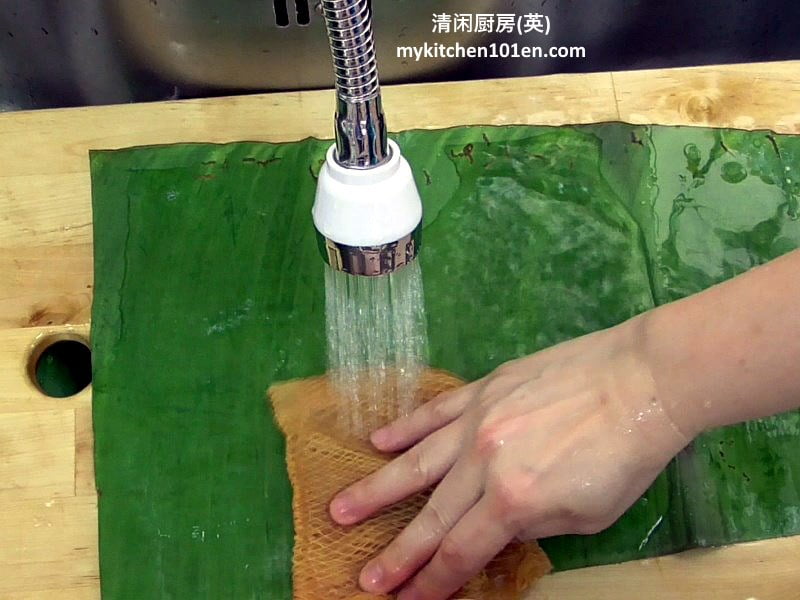
[ads1]
3 Dry the cleaned banana leaves with clean cloth.
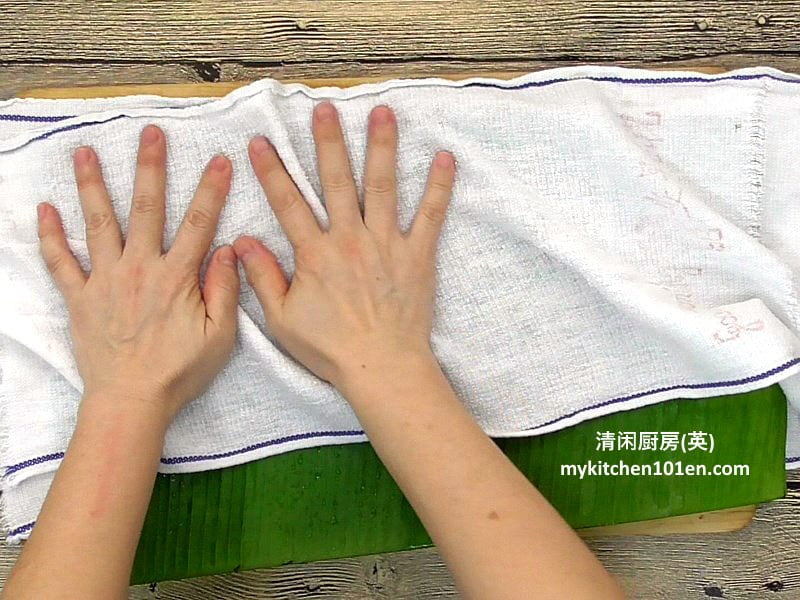
4 Cut out the desired size with scissors, then line the round moulds (size: H = 8 cm, D = 11 cm) with the banana leaves and tie with rubber bands.
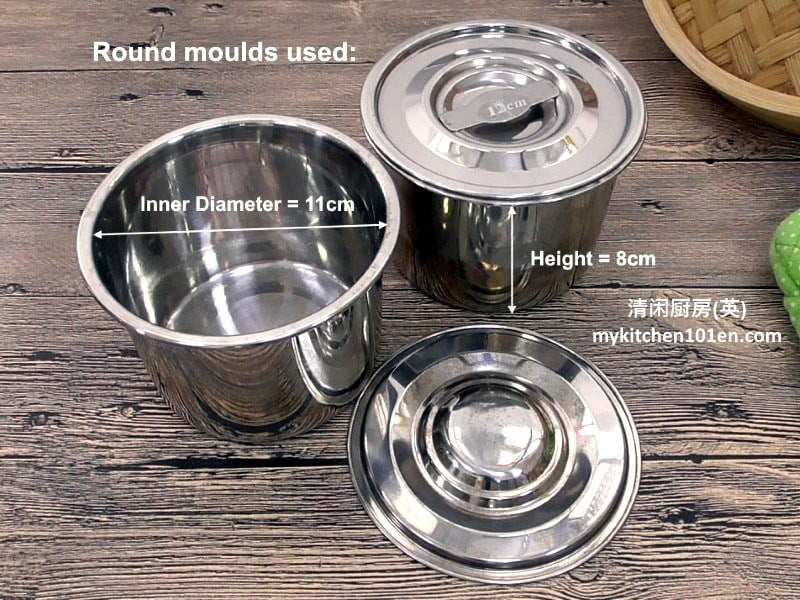
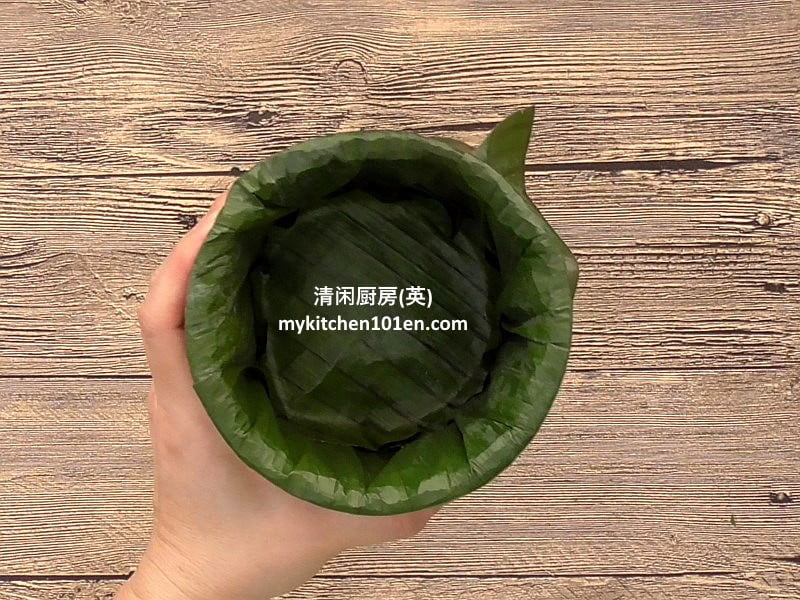
[ads1]
Preparing caramel glutinous rice flour batter:
1 Heat sugar in a pot over medium-low heat until melting, add in 2 tbsps of hot water by the edge of the pot, continue cooking until you have a golden colour caramel, do not over stir (do not cook until brown colour or the nian gao will taste bitter). (Reminder: Use cooking pot with thicker base to cook the caramel will reduce the chance of burning.)
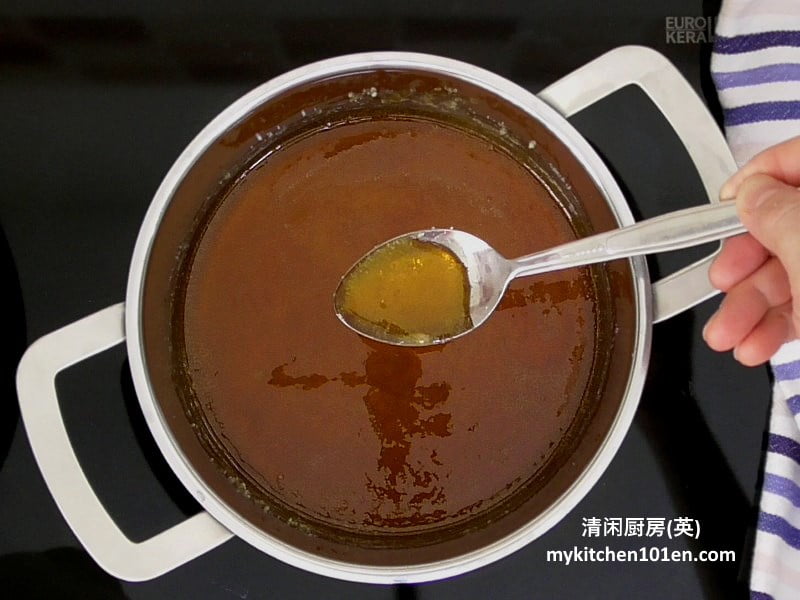
2 Off the heat, add in the remaining hot water by the edge of the pot gradually, then heat up again until all caramel has melted. Set the caramel syrup aside until fully cooled.
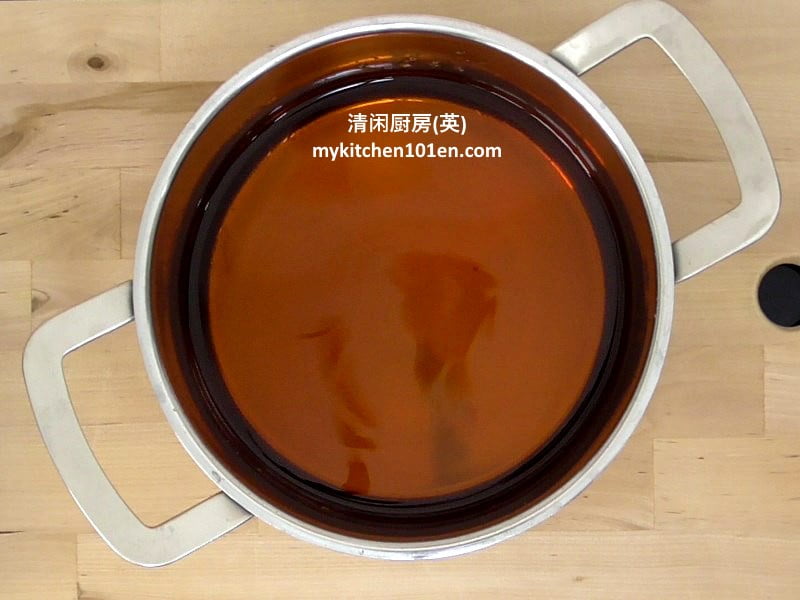
3 When cooled, add the caramel syrup to glutinous rice flour gradually while mixing, until you have a smooth caramel glutinous rice flour batter.
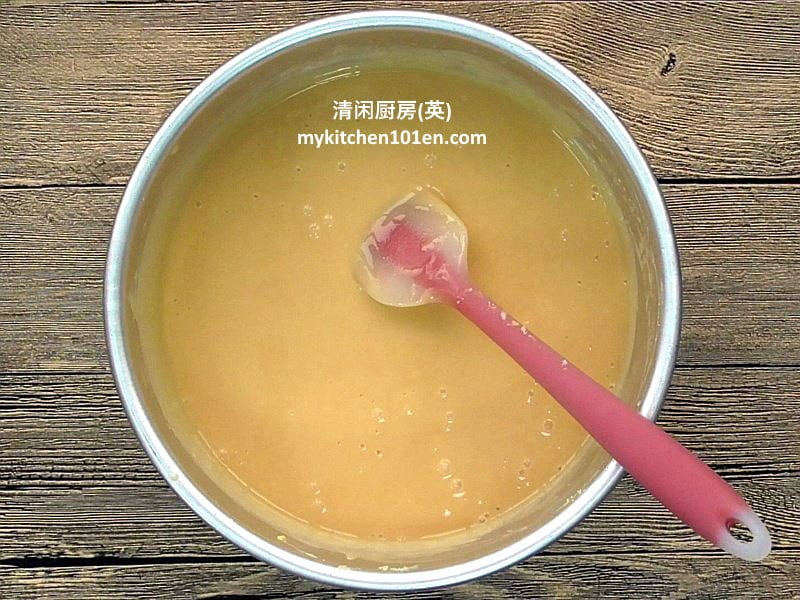
4 Strain the glutinous rice flour batter through a sieve.
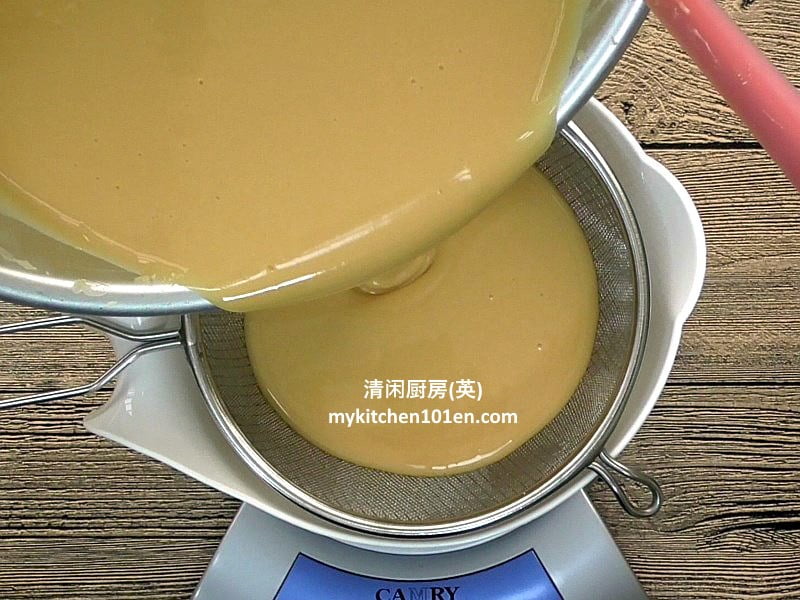
Steaming caramel nian gao:
1 Pour the batter equally into the prepared moulds (each about 480 g).
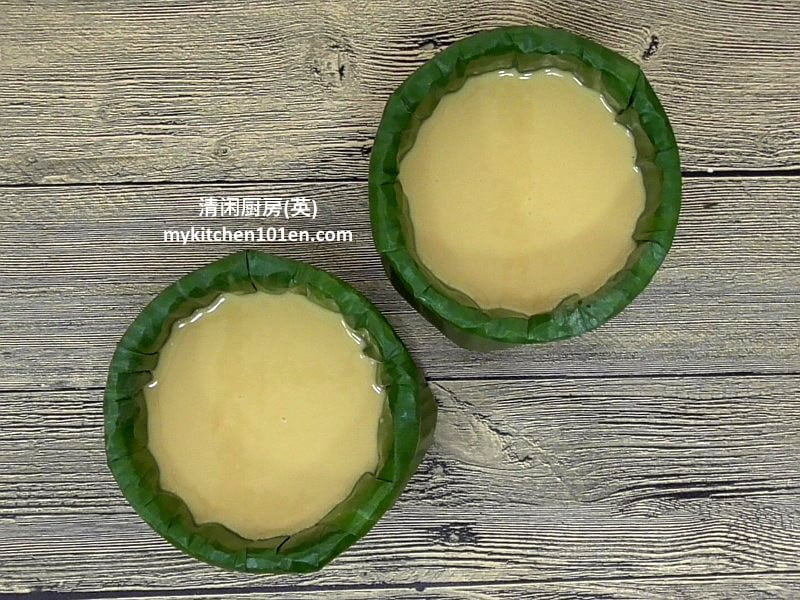
2 Cover the moulds with aluminium foil (to prevent water from condensation from dripping in).
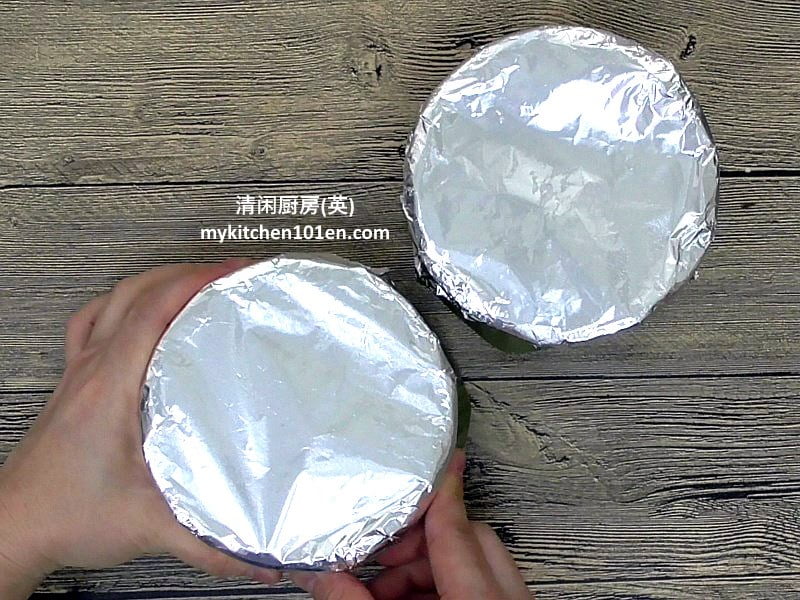
3 Bring water of steamer to rolling boil, steam over high heat for 30 minutes, then reduce to medium heat and steam for 1 hour 30 minutes (refill hot water of steamer when necessary).
(*Update on steaming time: Steam over high heat for 30 minutes, then over medium heat for 1 hour and then medium-low heat for 1 hour, it will yield nian gaos with smoother surface.)
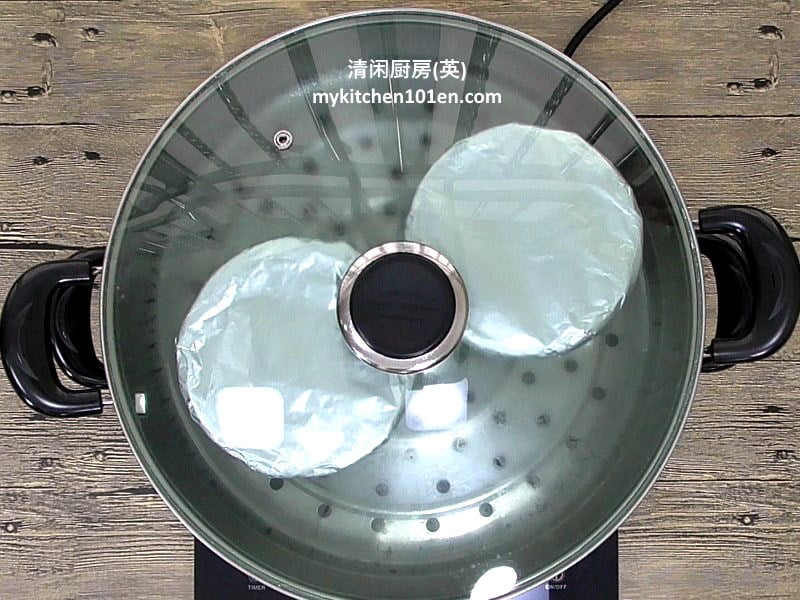
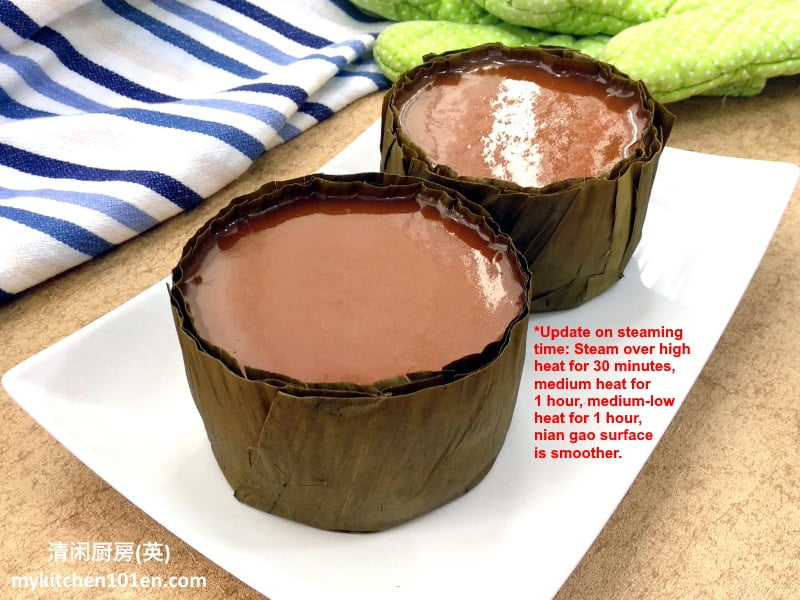
4 Set aside the steamed nian gaos until fully cooled before unmoulding (I usually unmould them the next day).
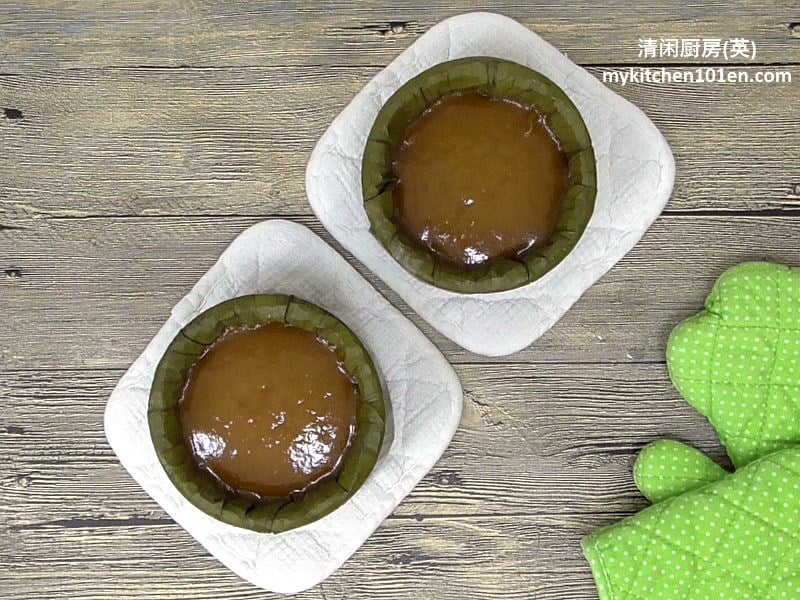
5 The color will become darker when fully cooled.
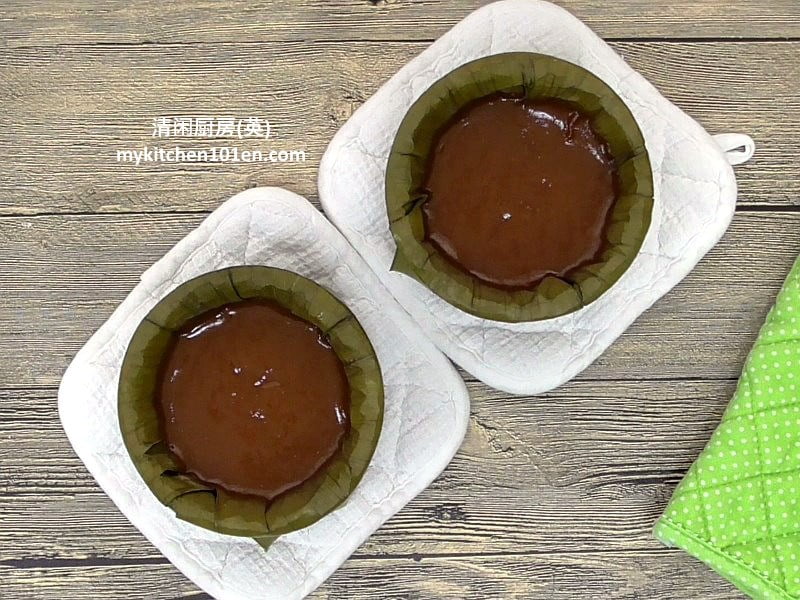
6 Unmould them and trim off excess leaves using scissors.
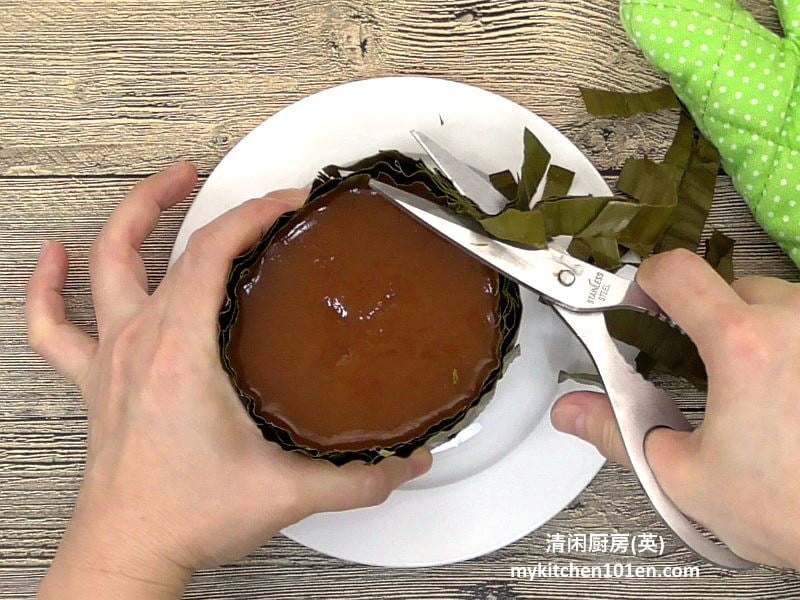
7 Keep them refrigerated for storage. Freshly cooked nian gao is very sticky and difficult to cut, refrigerate it for 2-3 days will make it harder and easy to cut. (Reminder: If storing at room temperature, put them on wire rack and place at well ventilated place for up to 2 weeks. After 2 weeks, transfer them to freezer for continue storage. Thaw frozen nian gao at room temperature before serving.)
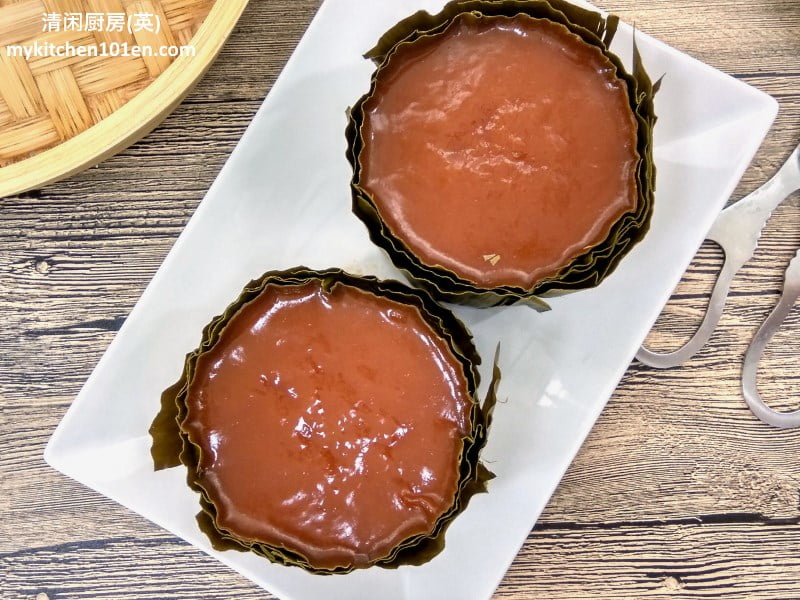

Simple Version Caramel Nian Gao (a.k.a. Kuih Bakul)
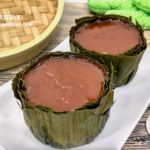
Nian gao (Chinese: 年糕, means Chinese New Year cake) is a must-have food during Chinese New Year. It is a homonym for “higher year”, which means raising oneself higher in the coming year.
- round moulds
- 350 g granulated sugar
- 430 g hot water
- 350 g glutinous rice flour
- adequate banana leaves (to line moulds)
- Blanch banana leaves with hot water to soften them.

- Clean the softened leaves gently with a dishwasher net.
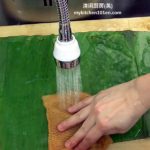
- Dry the cleaned banana leaves with clean cloth.
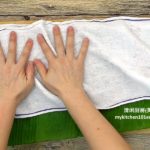
- Cut out the desired size with scissors, then line the round moulds (size: H = 8 cm, D = 11 cm) with the banana leaves and tie with rubber bands.
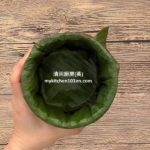
Preparing caramel glutinous rice flour batter:
- Heat sugar in a pot over medium-low heat until melting, add in 2 tbsps of hot water by the edge of the pot, continue cooking until you have a golden colour caramel, do not over stir (do not cook until brown colour or the nian gao will taste bitter). (Reminder: Use cooking pot with thicker base to cook the caramel will reduce the chance of burning.)
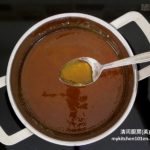
- Off the heat, add in the remaining hot water by the edge of the pot gradually, then heat up again until all caramel has melted. Set the caramel syrup aside until fully cooled.
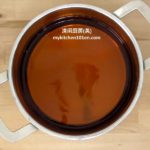
- When cooled, add the caramel syrup to glutinous rice flour gradually while mixing, until you have a smooth caramel glutinous rice flour batter.
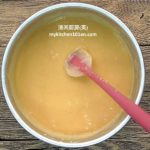
- Strain the glutinous rice flour batter through a sieve.
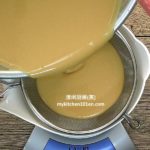
Steaming caramel nian gao:
- Pour the batter equally into the prepared moulds (each about 480 g).

- Cover the moulds with aluminium foil (to prevent water from condensation from dripping in).

- Bring water of steamer to rolling boil, steam over high heat for 30 minutes, then reduce to medium heat and steam for 1 hour, and then medium-low heat for 1 hour, to yield nian gaos with smoother surface. (refill hot water of steamer when necessary).
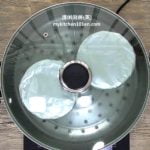
- Set aside the steamed nian gaos until fully cooled before unmoulding (I usually unmould them the next day).
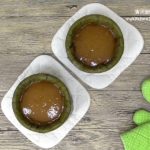
- The color will become darker when fully cooled.
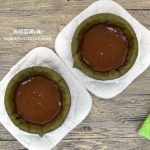
- Unmould them and trim off excess leaves using scissors.
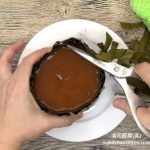
- Keep them refrigerated for storage. Freshly cooked nian gao is very sticky and difficult to cut, refrigerate it for 2-3 days will make it harder and easy to cut. (Reminder: If storing at room temperature, put them on wire rack and place at well ventilated place for up to 2 weeks. After 2 weeks, transfer them to freezer for continue storage. Thaw frozen nian gao at room temperature before serving.)
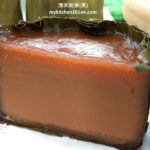
This recipe yields 2 nian gaos of 480 g each divided into 20 servings of 48 g each.
The nutritional value for reference is for 1 serving of nian gao.



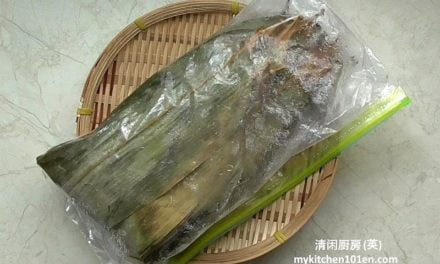
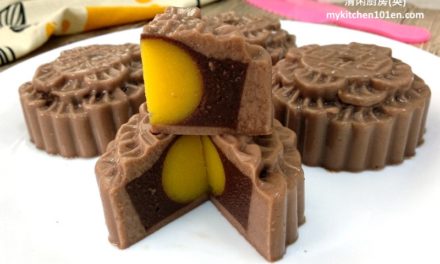
Yummmy soooo simple to make!!!!
Just nice since I was craving for 1 after cny. But need to get the moulds
Hi,
Thank you so much for sharing your recipe. I made it this year and many people praised me highly for it. They like the taste, fragrance and just-right sweetness.
My family used to buy niangao from kampung and eat it steamed, cut into small balls and coated with grated young coconut. Those made in the kampung are gooey and stays gooey for many hours. The ones I made are gooey upon steaming but harden after a while. I think it is due to dry glutinous flour being used.
May I know if I can use wet glutinous flour (those sold in wet markets during tangyuan festival)? If so, what is the ratio of wet flour to water?
Thank you for your kind attention.